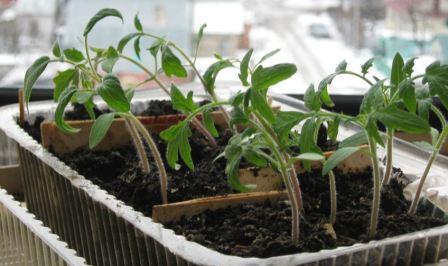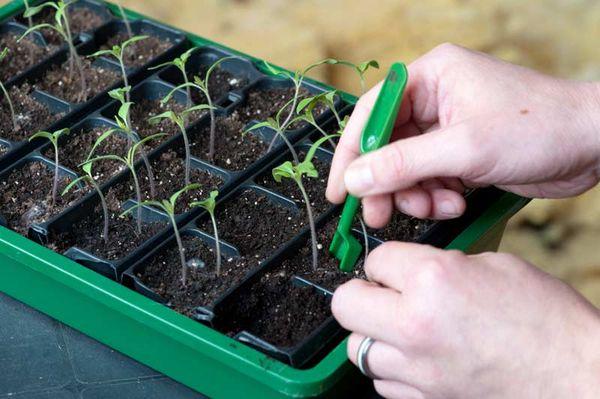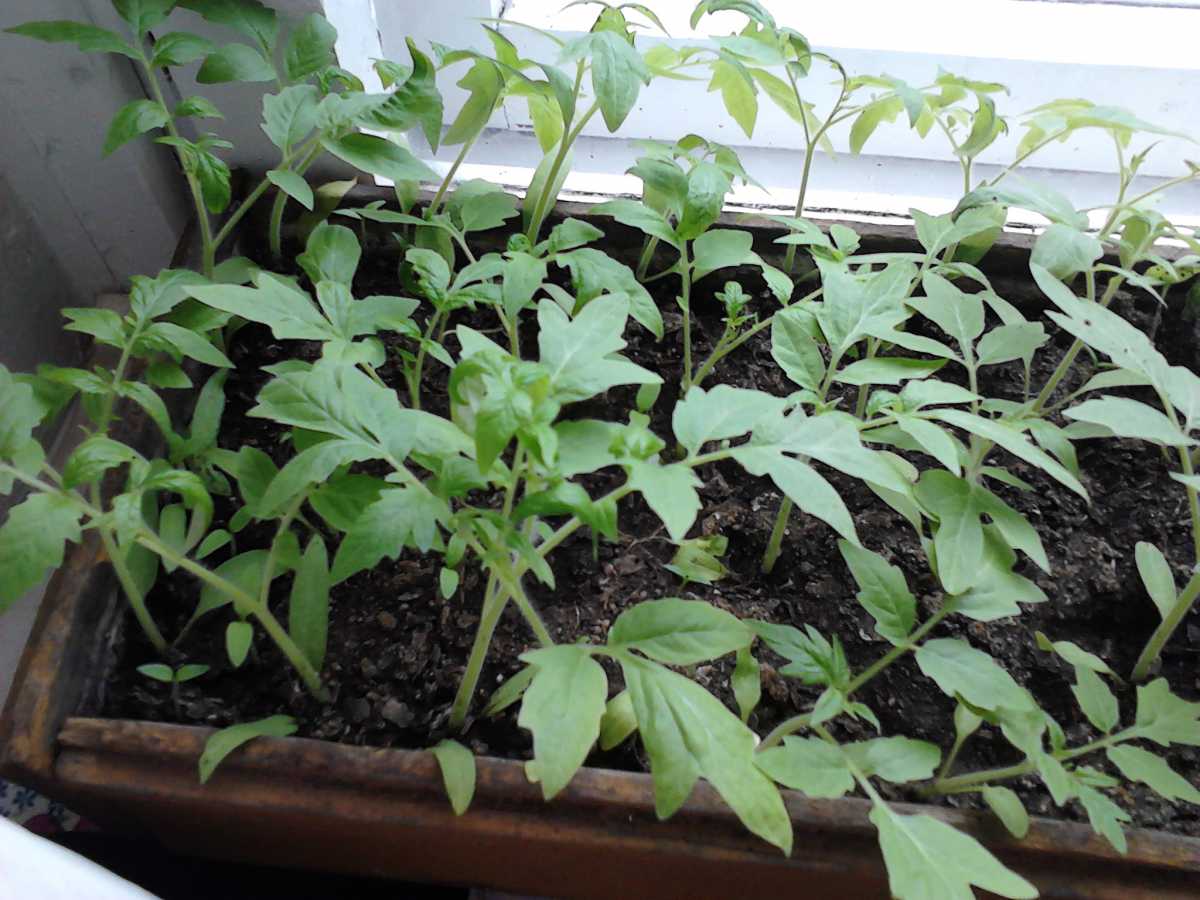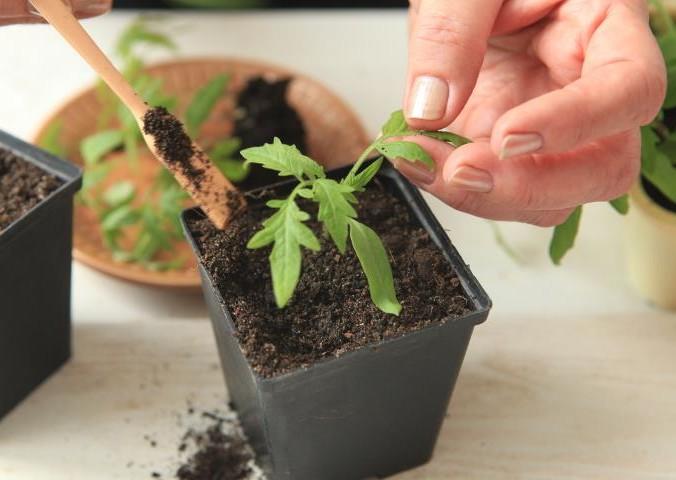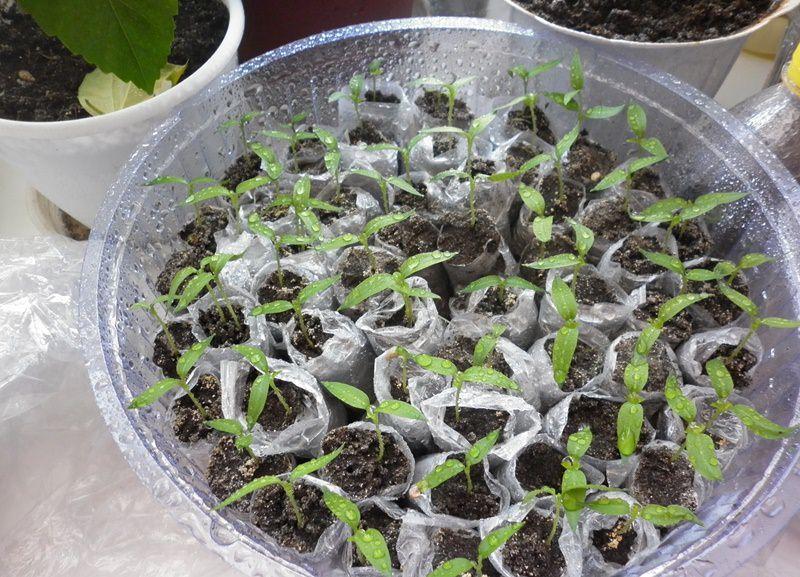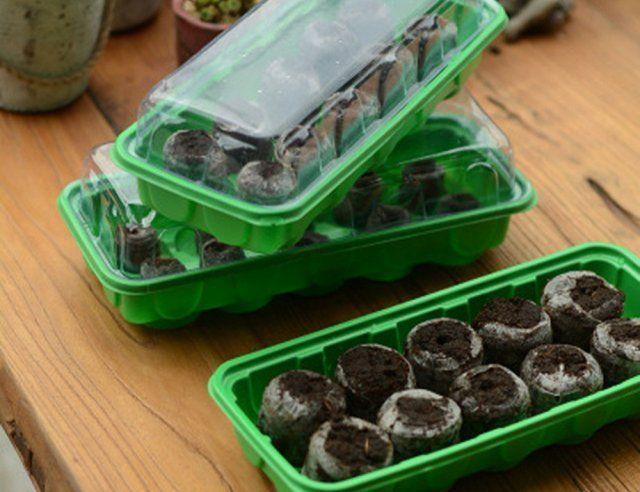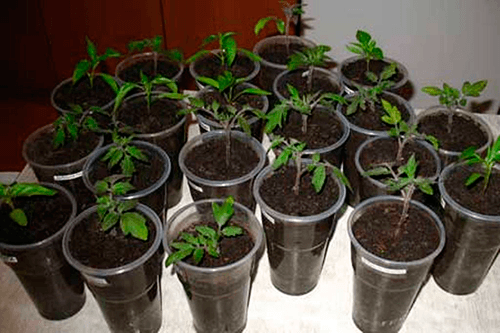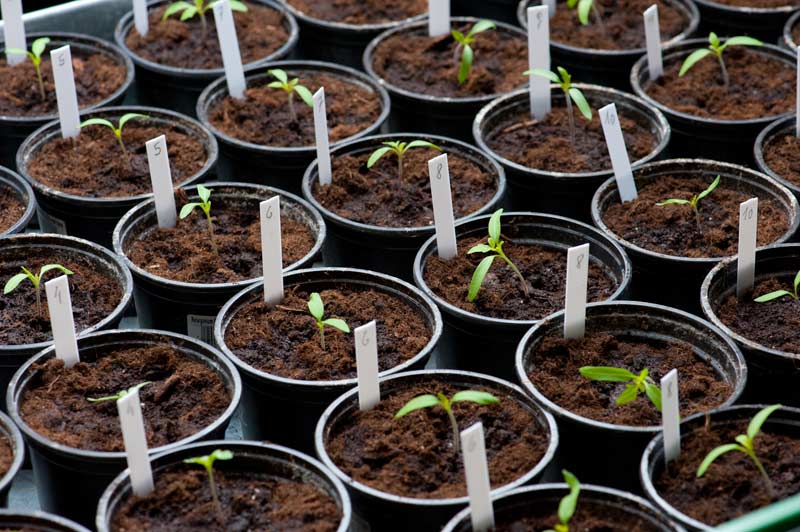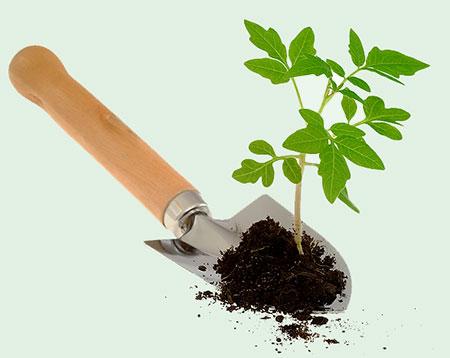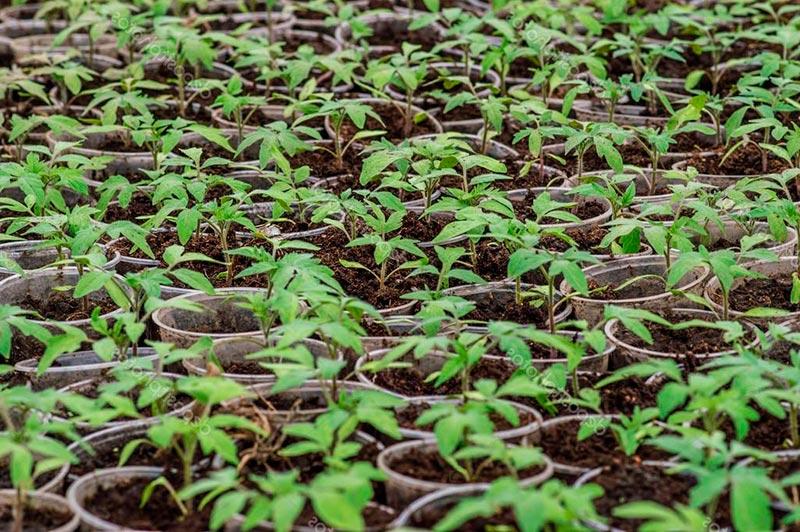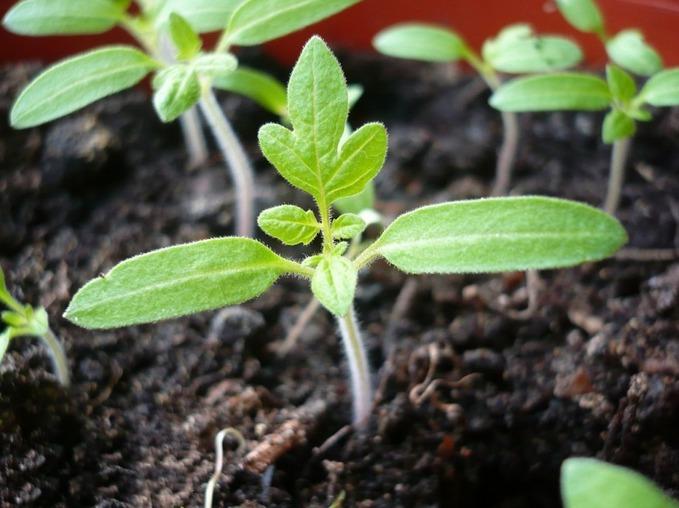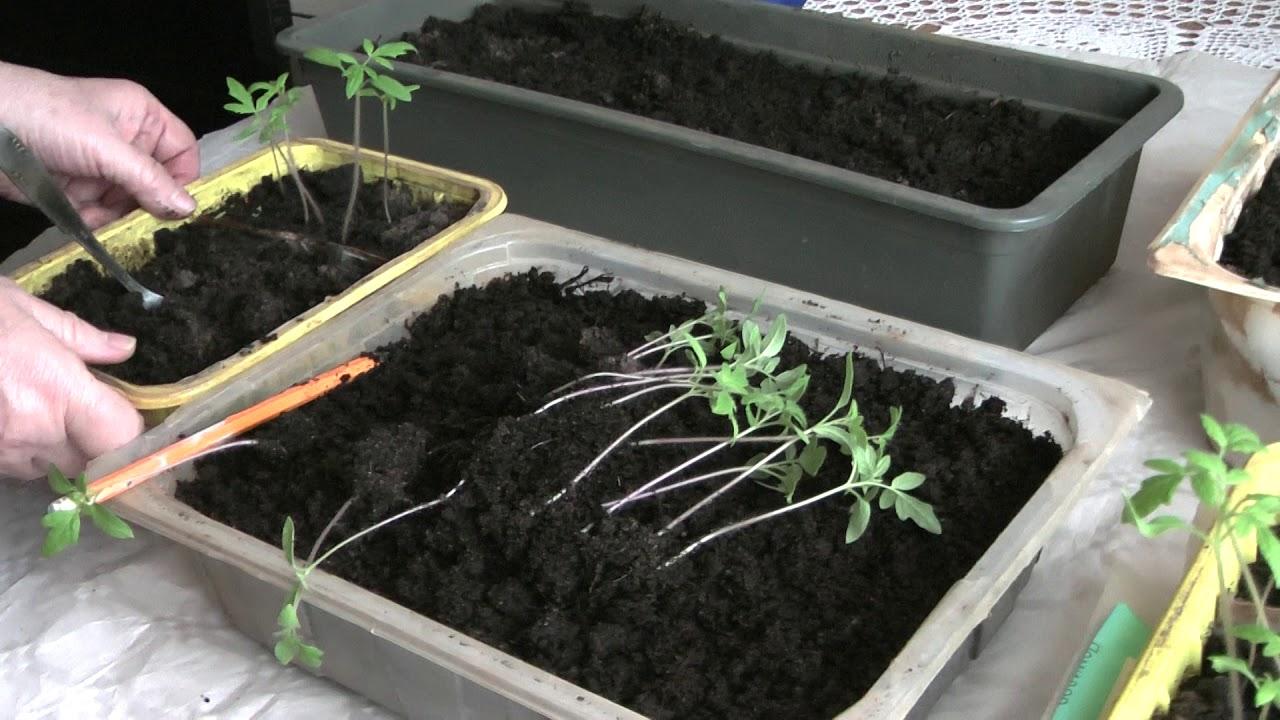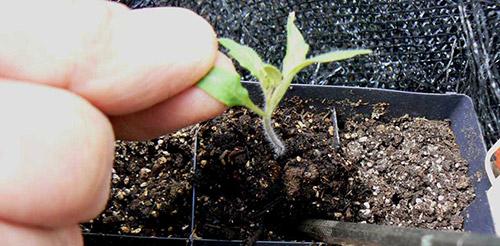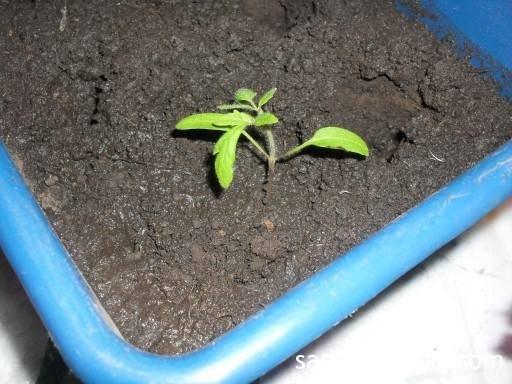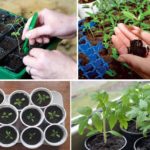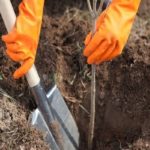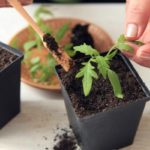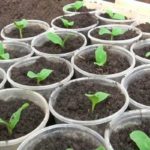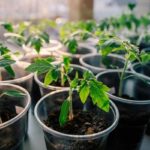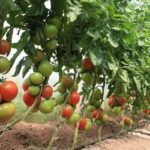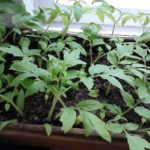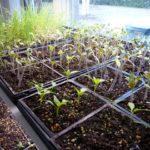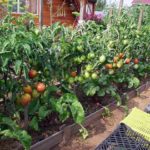Picking tomato seedlings is carried out in order to improve the condition of the root system and slow down the growth of the plant. Tomatoes undergo this procedure after 2 cotyledons or 2 true leaves appear on their stem. Picking is always stressful. This procedure cannot be postponed until later. At a young age, plants tolerate transplanting and root pinching more easily. Subsequently, the transplanted tomatoes develop better and produce a larger harvest.
- What is tomato picking: how does it affect plants
- Advantages and disadvantages of the method
- Picking methods
- Classical
- From film to diapers
- How to pick tomatoes planted in tablets
- When to pick tomatoes after germination
- Optimal timing in 2019
- Favorable dates according to the lunar calendar
- Preparing tomatoes for picking
- Preparing tomatoes for picking
- Preparing containers
- What kind of land is needed for picking tomatoes?
- Determining where tomatoes have two true leaves
- The principle of root pinching
- Technological process of picking
- Caring for tomatoes after
- What to do if tomato seedlings stretch to the point of picking?
- Picking stretched tomato seedlings
- What problems may arise and how to deal with them
- Seedlings don't grow
- Plants die
- Seedlings fall
- Is it possible to grow seedlings without picking?
What is tomato picking: how does it affect plants
Picking is the transplantation of young seedlings from one container to another using a peg. Tomatoes are replanted two weeks after sowing the seeds. A plant that has grown to 5 centimeters should have 2 cotyledons or 2 true leaves. The seedling is carefully removed from the box along with a lump of earth, without touching the stem. The operation is carried out with some sharp object, for example, a toothpick. In this way, densely growing plants are thinned out. They are transferred to another, more spacious box.
Before picking, the soil needs to be slightly moistened and loosened. The sprout is removed from the box so as not to damage the roots. During picking, the central root is shortened by 1/3. This procedure stimulates the development of lateral roots. Subsequently, the plant develops a more powerful root system.
Before transplanting the seedling, prepare a soil mixture. It should consist of garden soil, leaf soil, peat, sand, organic and mineral additives. The prepared soil is poured into a special container, moistened with water and depressions are made in it with pegs. After transplanting the seedling, lightly press the soil around it with a toothpick.After picking, the sprout is watered and placed in a warm room so that it takes root.
Immediately after transplantation, the seedlings freeze for some time. Then they grow more actively than those that were not transplanted. Depending on the variety, seedlings are transferred to boxes of different sizes. Low-growing tomatoes are planted in containers with a volume of 200-500 milliliters (large plastic cups can be used). Tall tomatoes are planted in deeper pots. Seedlings can be transplanted from boxes into plastic bags filled with substrate.
When transplanting into the garden, such a bag is carefully cut with scissors and lowered into the hole, and then it is pulled out of the ground.
This transplantation method does not damage the root system of tomatoes. Exactly the same effect can be achieved by planting seedlings in peat pots. Picking stimulates the development of slow-growing crops such as tomatoes. Due to the penetration into the soil when transplanting, the plants stretch less. After all, seedlings take about 2 months to develop before planting in the garden. During this time, she should grow only up to 30 centimeters. If the seedlings stretch too much, they will take root worse.
Picking allows you to cull sick and frail plants. Pinching the central root by 5 millimeters accelerates the formation of lateral roots. Subsequently, picking leads to an increase in tomato yield.
Advantages and disadvantages of the method
Picking has its positive and negative aspects. This agricultural technique requires caution. If you rush and pull the seedlings out of the dry soil, they may be damaged.
Advantages of picking:
- the condition of the seedlings improves;
- weak and damaged plants are discarded;
- the elongation of the subcotyledonous knee of seedlings is eliminated due to its penetration into the ground;
- a fibrous root system is created due to pinching of the main root;
- conditions for keeping growing seedlings are improved;
- After transplanting to the garden bed, the yield increases.
Disadvantages of picking:
- slight delay in seedling development;
- death of transplanted sprouts due to improper picking.
Picking methods
There are several ways to transplant tomatoes. The essence of all these methods is the same - plants are transplanted from one container to another. True, transplantation is carried out in different ways.
Classical
The essence of the classic method is as follows: the plants are lightly watered 2 hours before picking. Prepare the containers where the seedlings are going to be transferred. The cups are filled ¾ full with soil. Then, using a peg, they make a depression in it the length of the root. The sprout is carefully removed from the container along with the earthen lump using a spoon or peg. The longest root is pinched off to 5 millimeters. The stalk is buried in the soil almost to the cotyledon leaves. There should be a distance of 1-2 centimeters from the surface of the earth to the leaves. The seedling is sprinkled with soil and watered.
From film to diapers
Tomato seeds can be sown in plastic boxes covered with durable greenhouse film. The containers are filled with fertilized soil mixture. When the seedlings grow a little, they are transplanted into diapers made of plastic film. The grown sprouts are watered and removed together with the polyethylene from the box.
Take one plant at a time with a spoon and wrap it in cups made from greenhouse film.
Add soil to each diaper up to the cotyledon leaves. If there are still real leaves on the sprout, they should remain above such a glass.All rolls with seedlings are compacted tightly into a container, and the ground is watered.
How to pick tomatoes planted in tablets
Tomato seeds can be sown in peat tablets. These containers must be placed on a plastic tray and irrigated from time to time. When 3-4 leaves appear on the plants, the seedlings need to be picked. To do this, take deeper cups and pour a little fertile soil into them. You need to make drainage holes in the glasses themselves.
Peat tablets, along with sprouts, are inserted into such cups. First, the mesh is removed from the tablets. Seedlings transplanted into large containers are sprinkled with soil almost to the cotyledon leaves. In new containers, the seedlings grow until they are transplanted into the garden bed.
When to pick tomatoes after germination
Tomatoes peak when 2 cotyledons or 2 true leaves appear on the stem. Usually the first leaves grow 7 days after sowing the seeds. Proper picking improves the quality of the sprout. The seedlings are transplanted into large containers at the age of two or three weeks. If you tighten the picking, neighboring plants will intertwine their roots with each other, and it will be difficult to separate them.
Optimal timing in 2019
Seeds sown in mid-March germinate in the last days of March or early April. You can replant the plants at a later date, when they have developed up to 4 leaves. Seedlings that are too dense are weeded first.
Favorable dates according to the lunar calendar
When picking tomatoes, it is advisable to pay attention to the lunar phase. Transplantation of seedlings is carried out only on the waxing moon, that is, from 7 to 13 or from 15 to 20 March. On such days, juices from the roots move upward. Seedlings transplanted to the growing Moon turn out healthier and stronger.It is not advisable to transplant tomatoes on the waning moon (from 1 to 5, from 23 to 27, from 29 to 31 March), on the new moon (March 6) and the full moon (March 21).
Preparing tomatoes for picking
Transplanting tomatoes from one container to another occurs in several stages. First, the soil in which the seedlings are sown is slightly moistened. Then the seedlings are individually removed from the box and transferred to separate cups with a previously prepared nutrient soil mixture. After picking, the plants are watered with water.
Preparing tomatoes for picking
2 hours before transplanting, lightly moisten the soil with seedlings. It is undesirable to flood the soil with water. It is difficult to remove seedlings from such soil, and the plants may break. If the soil is not watered and loosened, the soil crust will not allow the sprouts to grow without damage.
Preparing containers
Tomatoes can be transplanted into wooden boxes, plastic cassettes, peat cups, peat tablets, plastic cups, yogurt boxes, sour cream boxes, homemade boxes, plastic bags. First, wooden or plastic containers are scalded with boiling water and washed with a weak solution of potassium permanganate. You need to make holes in the bottom to allow moisture to escape.
Peat pots or tablets are placed in a disinfected tray. The seedlings planted in them after picking are transplanted to the garden bed along with the cup a month later. With this method, the root system is not injured during the transplantation process. Peat decomposes and serves as an additional fertilizer for tomato sprouts.
What kind of land is needed for picking tomatoes?
It is advisable to transplant grown seedlings into well-fertilized soil. Garden and turf soil mixed with peat, sand, and rotted mullein in equal proportions are suitable for replanting.The soil mixture can be watered with a fertilizer solution (20 grams of superphosphate and potassium sulfate are taken per 10 liters of water). The ground is first disinfected with a weak solution of potassium permanganate.
Determining where tomatoes have two true leaves
Picking is carried out in the phase of two true leaves or when two cotyledon leaves appear on the stem. True leaves appear immediately after the cotyledons. Be sure to shorten the root of the seedlings during transplantation.
The principle of root pinching
The seedling removed from the ground must be shortened slightly. The main, that is, the longest, root is pinched. It is shortened by 5 millimeters. This procedure stimulates the growth of lateral roots.
Technological process of picking
Step-by-step picking technology: first, the soil into which the transplant will be made is prepared, then the seedlings are removed from one container and transplanted into another.
The soil mixture should consist of garden, leaf or turf soil, peat, sand and rotted humus. The soil is poured into cups disinfected with a weak solution of potassium permanganate. It is advisable to pre-fertilize the soil with a solution of superphosphate and potassium sulfate.
Caring for tomatoes after
Pickling tomatoes need to be topped up and placed in a warm place. The seedlings will stand for a while and then begin to grow. It is advisable to water the seedlings regularly. It is necessary to ensure that the soil in the cups does not dry out and is not too wet. Plants are kept in a well-lit room.
As they grow, the seedlings are turned toward the sun so that the stems grow evenly and do not bend to one side.
It is important to ensure that the seedlings do not stretch too much.To do this, the room temperature is reduced from 22 degrees to 18, and then to 15 degrees Celsius.
What to do if tomato seedlings stretch to the point of picking?
If there is little light in the room where the seedlings are growing, but it is too warm, the tomato stems become very elongated. A long thin stem is obtained if the sprouts are watered abundantly and a lot of fertilizing is applied. During picking, strongly elongated seedlings are immersed deeply in the ground (at a distance of 1-2 centimeters from the cotyledon leaves).
Picking stretched tomato seedlings
If the seedlings are very elongated before transplantation, they can be saved. The sprouts are carefully removed from the ground, then transplanted into large cups. The long stem is covered with loose soil up to 2 cotyledon leaves.
What problems may arise and how to deal with them
After picking, various problems with seedlings sometimes arise. Seedlings may slow down or even die. It is important to find out the cause of the problem situation and correct it.
Seedlings don't grow
If the seedling does not grow immediately after picking, it’s okay. This is a normal process. After a week, he will come to life and begin to grow a little. The main thing is to provide the plant with maximum light and minimum heat. At high temperatures, seedlings become very stretched before being transferred to the garden bed, which is extremely undesirable.
Plants die
If the transplanted seedlings begin to die, it means that the soil is not suitable for them or the roots were damaged during picking. Dead tomatoes cannot be restored. The seeds will have to be sown again.
Seedlings fall
If transplanted plants begin to fall, it means the soil is not suitable for them. Perhaps the soil was not disinfected, and pathogenic microorganisms were activated in it.Seedlings droop their heads if you do not follow the watering and maintenance regime for tomatoes. Crops should be kept in well-lit areas and watered regularly, but not abundantly.
Is it possible to grow seedlings without picking?
Tomatoes can be grown without prior picking. This shortens the period of plant development. True, with such agricultural technology it is advisable to fertilize the soil well with nitrogen, potassium and phosphorus. When grown without picking, the seeds are sown immediately in peat pots or half-liter plastic cups.
For seedlings, use a soil mixture consisting of garden and turf soil, peat, steamed sand, sifted rotted humus and wood ash. The soil must be disinfected with a weak solution of potassium permanganate. You can sow 2-3 seeds in one container, and then discard the weak ones, leaving the strongest sprout.
As the seedlings grow, they are covered with soil. The seedlings are hilled up so that the tomatoes form a large stem. The seedling, which has grown to 30 centimeters, is transplanted into the garden bed in the second half of May.

